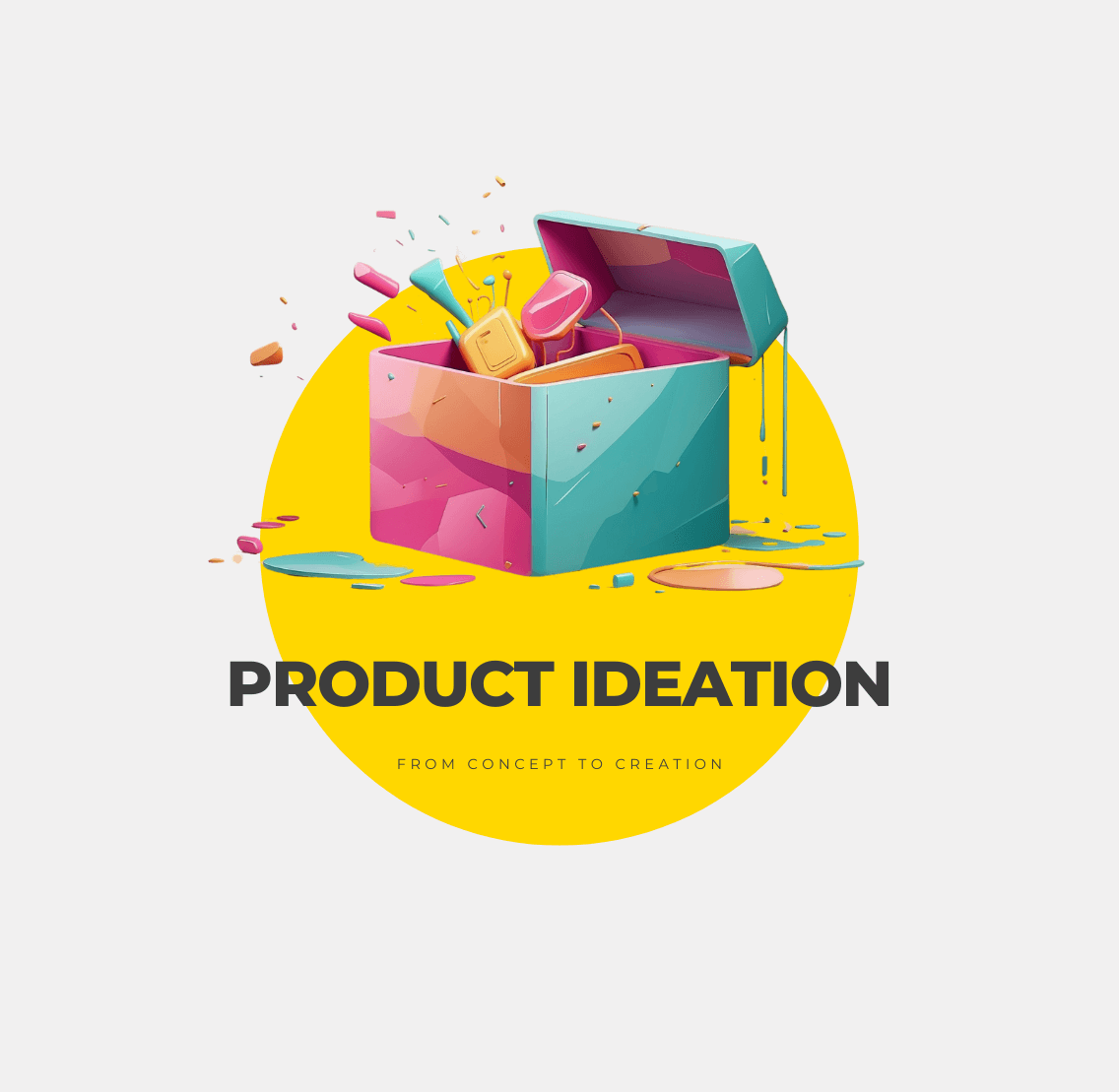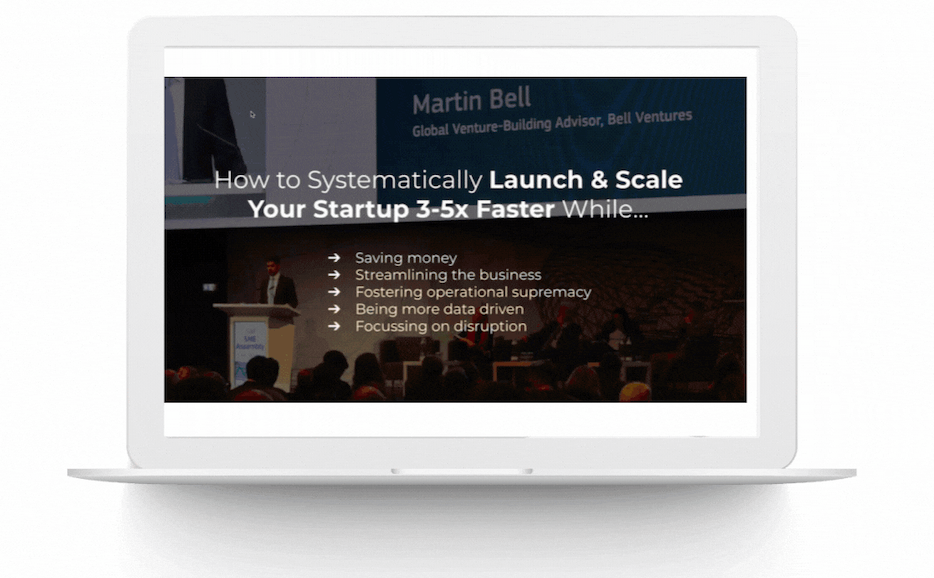
Systematically Build Your Startup. Fast.
Democratizing Entrepreneurship through a Proven Venture Building Process.
Democratizing Entrepreneurship through a Proven Venture Building Process.

100tasks@bell.ventures

Schedule a Demo Call

Welcome to the vibrant world of the product ideation process! The birthplace of innovation, where raw ideas transform into groundbreaking products.
The journey isn’t easy, it involves a maze of brainstorming, refining, evaluating, and prioritizing. But, as the saying goes, “The journey of a thousand miles begins with a single step.”
So, let’s embark on this trail of discovery and creativity, and witness how the product ideation process shapes successful products.

Product ideation is comparable to a gold mining expedition. It involves the careful generation, refinement, and prioritization of ideas to find innovative solutions that satisfy market demands and user preferences.
Imagine a bustling hub of creativity where a team’s collective wisdom melds with valuable user feedback and market insights. That’s your product ideation process, the epicenter of fresh ideas and ambitious product development.
But what’s the secret to striking gold? Data! Think of data as your trusty compass, guiding you to industry trends and opportunities. It lends context to your ideas and validates your assumptions, ensuring your product resonates with your target audience.
As product managers, your role is to manage this ideation process, optimally using the varied expertise of your team members, and promoting a culture of active participation.
Every successful product ideation process is built on the solid groundwork of its fundamental elements. Like constructing a skyscraper, it begins with understanding your objectives and constraints, like the plot’s dimensions and the height restrictions.
The architecture of your ideation process is then designed by cross-functional collaboration, bringing together architects, engineers, and designers to shape the structure.
Lastly, the building becomes a home when a user-centric approach breathes life into it, ensuring it caters to the needs of its inhabitants.
Product ideation also involves:
The identification of objectives and constraints forms the plan for your ideation process. It’s the compass that guides you through the brainstorming storm, preventing you from veering off course. Consider it akin to setting the coordinates on a GPS before embarking on a journey. It defines the destination and plots the most efficient route, ensuring a smooth ride.
Setting clear objectives is like defining the ‘What’ and ‘Why’ of your journey.
What’s the destination?
Why are we heading there?
It provides a sense of direction and purpose to your ideation sessions, ensuring everyone on the team is on the same page. It’s about considering ideas from various perspectives, identifying potential challenges and solutions, and ultimately generating data-based product feature ideas.
Remember, the key to a successful journey is not only identifying the destination but also understanding the terrain and the hurdles that lie ahead.
Cross-functional collaboration forms the backbone of your product ideation process. Just like a well-oiled machine, every gear interlocks with the other, driving the mechanism forward. It’s about bringing together the best minds from various departments to form your dream team, each member contributing their unique insights and expertise to the ideation process.
Imagine a round table, where each seat is occupied by a representative from different departments. As a product manager, you’re the moderator, ensuring that every voice is heard and every idea is considered. This cross-functional collaboration not only fosters a sense of unity but also ensures that no stone is left unturned in the ideation process.
Prioritizing user experience is a constant throughout the product ideation process. We build a foundation centered around empathy and understanding our users’ needs. It’s about keeping your users at the core of every decision, every brainstorming session, and every product feature that you design.
Like a compass guiding a ship, a user-centric approach ensures that your product development journey is always aligned with the needs and preferences of your users.
Imagine standing in your user’s shoes, viewing the world from their perspective. It’s about understanding their pain points, their needs, and their desires.
By focusing on user feedback and customer requests, you not only cater to their needs but also build products that resonate with them, fostering long-term customer loyalty and retention.

Having set the context, it’s time to examine the key players of the product ideation process - the idea generation techniques. Think of these as your ideation toolkit, each tool designed to spark creativity and fuel the idea generation engine.
Whether it’s brainstorming, a free-flowing storm of creative ideas, or brainwriting, a more structured and inclusive approach, each technique has its unique charm and effectiveness.
Storyboards, on the other hand, add a visual dimension to idea generation. Like a comic strip, they depict the user’s journey, highlighting their interactions with your product. This not only fosters empathy towards the user but also aids in understanding the user experience better. And then there are techniques like the “How Might We” and SCAMPER that challenge you to think outside the box, pushing the boundaries of creativity.

Generating ideas is comparable to spreading a wide net into a sea of creativity, aiming to capture a multitude of ideas. But not all ideas make it to the shore. Some are tossed back into the sea, while others are carefully selected and nurtured. That’s where evaluating and prioritizing ideas come into play. It’s like a sieve, filtering out the most promising ideas based on factors such as feasibility, potential impact, and alignment with business objectives.
Think of it as an audition, where each idea gets a chance to perform on the stage of feasibility and viability. The best performers make it to the final round, where they are further honed and refined for the grand performance - the product launch.
This process of evaluation and prioritization ensures that only the best ideas get the limelight, increasing the chances of a successful product.

After the evaluation and prioritization of ideas, the next step is their conversion into executable concepts. This is where the rubber meets the road, where the abstract ideas take a concrete form, ready to be tested in the real world.
The process is akin to a chrysalis transforming into a butterfly, where the initial idea develops and evolves into a tangible product feature.
Prototyping and iterative development are key components of this transformation process. If an idea is a blueprint, then a prototype is the 3D model of that blueprint, a tangible representation of your idea that can be tested and refined. Just like a dress rehearsal before the final performance, prototyping allows you to test your ideas in a controlled environment, identifying potential flaws and areas of improvement.
The iterative product development process complements prototyping by allowing for continuous refinement and improvement. It’s like a feedback loop, where each iteration of the prototype is tested, feedback is collected, and improvements are made. This cycle continues until the final product meets the desired standards and user expectations.
Testing and validation act as the final checkpoint in the product development journey. It’s like a quality check, ensuring that the product meets user needs and expectations, as well as quality and performance standards. It’s about putting your product through rigorous tests, like a car going through crash and safety tests before hitting the market.
User testing is an integral part of this process, providing valuable insights into how your users interact with your product. It’s about observing their interactions, understanding their pain points, and refining your product to provide a seamless and enjoyable user experience. User research plays a crucial role in achieving these goals.

In the rapidly changing realm of product development, maintaining an edge is critical. Leveraging emerging trends and technologies can provide that competitive edge, inspiring innovative product ideas that cater to evolving market demands. It’s like a surfer riding the wave of innovation, using its momentum to glide ahead of the competition.
Whether it’s the integration of Internet of Things (IoT) in products, the use of data for rapid product development feedback, or the mass adoption of 3D printing, these trends and technologies open up new avenues for product ideation. By staying abreast of these advancements, you can ensure that your products remain relevant and competitive in the market.
Customer feedback is the cornerstone of successful product ideation. It’s like a mirror, reflecting the user’s perception of your product. Establishing a customer feedback workflow ensures that this mirror is always clear and accurate, providing valuable insights into user needs and preferences. By taking the time to collect user feedback, you create a direct line to your users, enabling you to listen to their feedback and make improvements accordingly.
By incorporating feature requests into your product, you can:
Cultivating a culture of innovation is similar to planting the seeds of creativity in rich soil. It’s about creating an environment where:
By fostering such a culture, you can ensure that your ideation process remains dynamic and full of innovative ideas.
Imagine a garden where every flower is encouraged to bloom, regardless of its shape or color. That’s what a culture of innovation looks like, a place where every idea is valued and every voice is heard. By nurturing such a culture, you can ensure that your product ideation process remains fresh and vibrant, always ready to produce the next big idea.
To exemplify these principles and practices, let’s examine a case study of successful product ideation. Imagine a company embarking on its product ideation journey, armed with the tools and techniques we discussed. The product ideation process begins with brainstorming sessions, where the team generates a plethora of ideas using various techniques. Each idea, a spark of creativity, is carefully evaluated and prioritized, ensuring that only the most promising ones are selected.
The selected ideas are then transformed into actionable concepts using prototyping and iterative development. Each prototype undergoes rigorous testing and validation, ensuring that it meets user expectations and quality standards. Throughout this process, the company maintains a strong user-centric approach, continuously collecting user feedback and making improvements based on their feedback.
By leveraging emerging trends and technologies, the company stays ahead of the curve, infusing its product with innovative features that cater to evolving market demands. In addition, the company nurtures a culture of innovation, fostering a spirit of creativity and risk-taking among its team members. The result? A successful, innovative product that resonates with its users, a testament to the power of a well-structured product ideation process.
In a nutshell, product ideation is a journey of discovery and creativity, a voyage that transforms raw ideas into successful, innovative products. It’s a journey that starts with identifying objectives, fostering cross-functional collaboration, and adopting a user-centric approach. Along the way, various idea generation techniques fuel the ideation engine, while evaluation and prioritization ensure that only the best ideas make it to the end. The journey concludes with transforming ideas into actionable concepts, testing and validating them, and finally launching a product that meets user needs and expectations.
If you found the insights on managing the product ideation process valuable, you might like our article on idea generation techniques - What Is Idea Generation? Ignite Your Creativity for Growth
Ideation consists of three stages: generation, selection, and development. Each one can help you achieve a successful outcome for your project!
Product ideation is a customer-centric process which involves taking user insights and transforming them into ideas to improve the product. It helps teams better understand customer needs and develop groundbreaking solutions for them.
Customer feedback is a crucial factor in product ideation, giving you essential insight into what users want and need. This allows you to ensure that your ideas align with user expectations, creating products that truly deliver value.
A culture of innovation creates an environment conducive to creative risk-taking and collaboration, leading to successful product ideation.
A successful example of product ideation in action is a company utilizing idea generation techniques, transforming ideas into concepts and iteratively developing prototypes.
Martin Bell (Founder & CEO of Bell Ventures) is the visionary and driving force behind the hyper-successful 100 Tasks Startup System which has driven the growth of 20,000+ startups including Zalando and Delivery Hero.
At Rocket Internet, he pioneered the 100-Day-Launch process and led 120+ private and public sector venture-building projects.
Now Martin aims to democratize entrepreneurship by sharing his invaluable practical knowledge and tools to empower aspiring entrepreneurs just like you. Does that sound like you? Then make sure to learn more below ...






